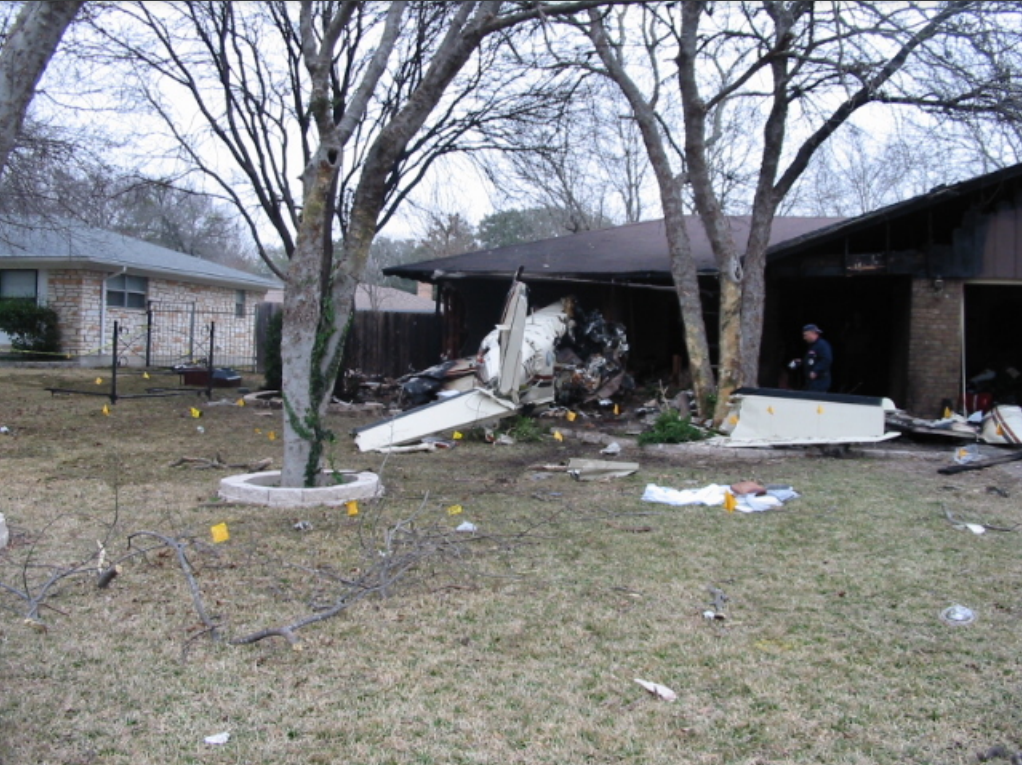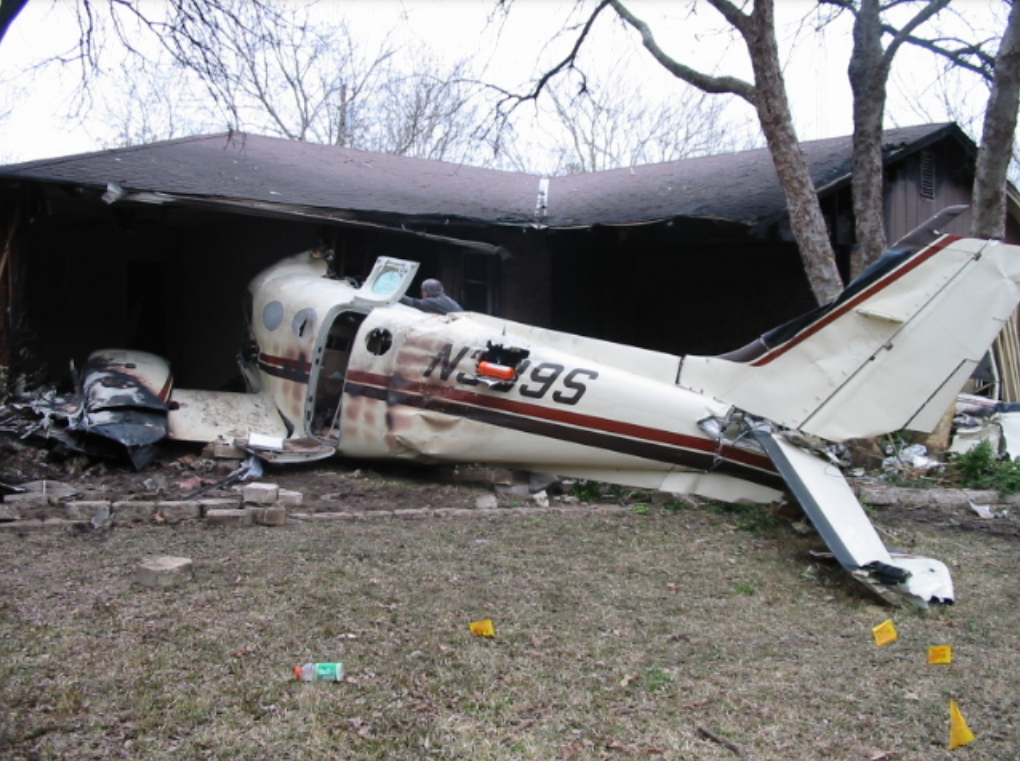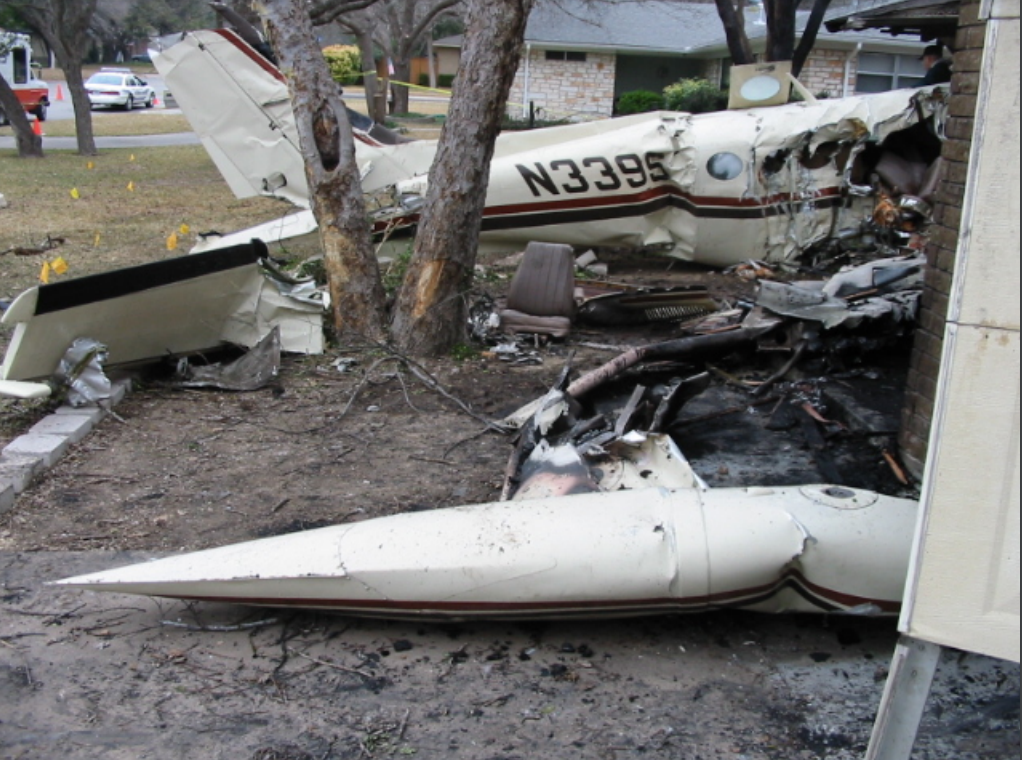
ASN Wikibase Occurrence # 45658
This information is added by users of ASN. Neither ASN nor the Flight Safety Foundation are responsible for the completeness or correctness of this information.
If you feel this information is incomplete or incorrect, you can submit corrected information.
| Date: | Thursday 17 January 2002 |
| Time: | 15:22 |
| Type: |  Cessna 340A |
| Owner/operator: | Harold S. Bercu |
| Registration: | N339S |
| MSN: | 340A-0712 |
| Total airframe hrs: | 5877 hours |
| Engine model: | Continental TSIO-520-NB |
| Fatalities: | Fatalities: 3 / Occupants: 5 |
| Aircraft damage: | Destroyed |
| Category: | Accident |
| Location: | Temple, TX -
 United States of America United States of America
|
| Phase: | Landing |
| Nature: | Executive |
| Departure airport: | Houston Gulf Airport, TX (KSPX) |
| Killeen Municipal Airport, TX (ILE/KILE) | |
| Investigating agency: | NTSB |
| Confidence Rating: |
On January 17, 2002, at 1522 central standard time, a Cessna 340A twin-engine airplane, N339S, was destroyed when it impacted trees and a private residence during a forced landing following a loss of engine power near Temple, Texas. The airplane was registered to and operated by a private individual, but maintained and operated from Jet Service of Houston, Texas. The commercial pilot and two passengers sustained fatal injuries, and two passengers sustained serious injuries. Visual meteorological conditions prevailed, and an instrument flight rules (IFR) flight plan was filed and activated for the 14 Code of Federal Regulations Part 91 business flight for the Abundant Life Christian Church of La Marque, Texas. The cross-country flight originated from the Houston Gulf Airport (SPX), League City, Texas, at 1416, and was destined for Killeen, Texas.
While on an IFR clearance, the pilot reported to approach control that he was unable to maintain 4,000 feet msl, and did not give a reason. Shortly there after, the pilot contacted approach control and stated that he had "fuel starvation" in the right engine and the left engine had just quit. Radar data depicted the aircraft at an altitude of 3,400 feet. The controller asked the pilot if they were completely without power, and the pilot responded, "yes, we're now gliding." The controller gave the pilot instructions to the nearest airport, which was approximately 4.5 nautical miles away. After passing 2,100 feet, the pilot informed the controller that he would be landing short. During the forced landing, the airplane struck the top of a tree, crossed over a house, struck another tree, struck a telephone wire which crossed diagonally over a street, and then cleared a set of wires which paralleled the street. The airplane then impacted a private residence within a residential area, and a fire erupted damaging the airplane and the private residence. Ten gallons of fuel were drained from the left locker tank, which supplements the left main fuel tank. Examination of the airframe and engines did not disclose any structural or mechanical anomalies that would have prevented normal operation. Examination of the propeller revealed that neither propeller had been feathered.
Probable Cause: The pilot's mismanagement of fuel, which resulted in a total loss of engine power due to fuel starvation. Contributing factors were the pilot's failure to follow the checklist to feather the propellers in order to reduce drag.
Accident investigation:
 |
|
Sources:
NTSB: https://www.ntsb.gov/_layouts/ntsb.aviation/brief.aspx?ev_id=20020125X00132&key=1
Location
Images:




Revision history:
| Date/time | Contributor | Updates |
|---|---|---|
| 28-Oct-2008 00:45 | ASN archive | Added |
| 21-Dec-2016 19:24 | ASN Update Bot | Updated [Time, Damage, Category, Investigating agency] |
| 09-Dec-2017 15:23 | ASN Update Bot | Updated [Destination airport, Source, Narrative] |
Corrections or additions? ... Edit this accident description
The Aviation Safety Network is an exclusive service provided by:


 ©2024 Flight Safety Foundation
©2024 Flight Safety Foundation